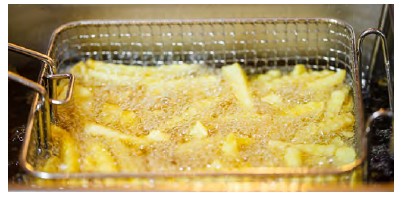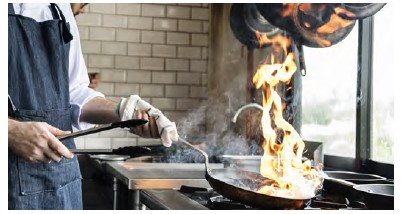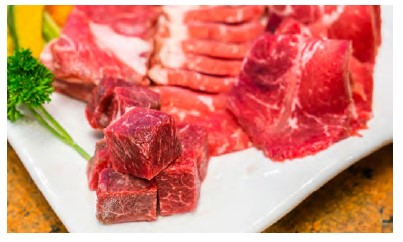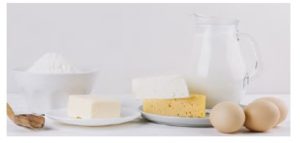Food:
Food is defined as any kind of processed, partially processed or unprocessed substances that is expected to be consumed, drinked and eaten by people.
Reliable food:
Reliable food is a foodstuff, away from all kinds of deterioration and disease- causing factors, not generate a health problem, suitable for consumption and had been not lost its nutritional value.
Foodstuffs have been processed for that;
• Facilitate of foodstuffs storage and transport,
• Providing the presence of various foods in the other seasons and regions,
• Upgrade flavor and appearance of foods,
• Ease preparation and cooking of foods,
• Increase diversity of foodstuffs,
• Destroy pests in their composition,
• Increase the nutritional value by creating mixtures,
• Increase the consumption period in a healthy w ay.

Chemical Pollutants:
Chemical Pollutants can be transmitted to food at any stage of the Production- Processing-Storage-Distribution-Sales chain or may occur during the processing of foods; and that toxic, carcinogenic or mutagenic effects can cause serious health problems.
In the responsibility of food safety, the consumer has responsibilities together with each ring of the Production-Processing-Storage-Distribution-Sales chain.

Pollutants to Have Been Formed During the Cooking Process:
The aim of the cooking process is to increase the flavor, to facilitate the digestion of foods and to eliminate microorganisms. However, with the application of high heat, loss of nutritional value and formation of various toxic, mutagenic and carcinogenic compounds is in question.
1. Polycyclic Aromatic Hydrocarbons
Polycyclic Aromatic Hydrocarbons have been formed with the combustion of products such as smoke, tar, soot, coal, oil.

Polycyclic Aromatic Hydrocarbons (PAH) are transmitted to foods in two ways:
• The accumulation of gases and fumes in the atmosphere resulting from the combustion of coal and petroleum products; contamination and storage in the airborne, soil and water.
• Formation in the foods, during grilling, frying and fuming by heat treat ment with barbecue/charcoal.
Factors affecting the formation of PAH in foods;
The type of cooking, the type of fuel, the fuming time of the food, the fat content of the food. PAHs are formed in the meat and fish by grilling on open fire. In particular, PAH formation occurs when the meat has a distance of 6-7 cm. Less PAH is formed with cooking in electric ovens or grills.
More than 20 PAHs were identified in foods and more than 10 PAHs were determined to have carcinogenic effects on experimental animals. Some of PAHs that are taken of the respiratory and skin were found to be carcinogenic in the lung and skin and some had tumor-forming activity.
2. Heterocyclic Amines
Heterocyclic Amines are compounds that occur during the heat treatment of proteins containing glutamic acid, phenylalanine, ornithine or soya globulin.
The formation of heterocyclic amines during the cooking of protein-containing nutrients varies depending on the nature of the food, the cooking method, cooking time and cooking temperature.
When the maximum temperature applied to the food is below 150°C, the products of the degradation of the amino acids are formed less than the higher temperatures.
It is known that the number of high mutagenic HA which have formed during the cooking of meat is more than 16. Most of them have been indicated to be carcinogenic for mice. Individuals at risk of cancer is affected by factors such as genetic tendency, the degree of exposure to substances such as HAs, and the inability of the DNA to repair itself.
3. Acrylamide
Acrylamide is formed by the maillard reaction of amino acids and sugars in which that the composition of the fried nutrients. Asparagine is the major amino acid that is responsible for the formation of acrylamide.

It was determined that the formation of acrylamide depends on temperature and time and the temperature should exceed 120°C in order to achieve acrylamide formation. When cooking temperature reached 160-180°C, it was found that acrylamide formation reached the highest level.
It has been identified that potato chips-fries and grains, in which have much higher amounts of acrylamide than other foods, and these acrylamide contents are related to the high asparagine content.

Acrylamide has effects carcinogen, mutagen and toxic on fertility. It has been reported that toxic effects of acrylamide on human and animal nervous system and experimental animals’ male genital organ, occurs after a single orally dose intake. It should be taken into account in the evaluation of acrylamide intake, used polyacrylamides not only in food but also in the cosmetics industry, food packaging and water treatment.
4. N-nitroso Compounds
N-nitroso compounds can be formed in the curing stage of nutrients, as well as that can be formed a result of various biological processes both nitrite and nitrate in humans and animals. Basic sources of N-nitroso compounds are cured meat-fish and some kinds of cheese.


Curing:
Curing is to convert the meat color to the permanent meat color by using K or Na salts of nitrites or nitrates.
The highest amounts of N-nitroso compounds are occurred in the meats cooked by the frying method. N-nitroso compounds are toxic, teratogenic, mutagenic and carcinogenic; they cause DNA damages and gene mutations in different parts of the human body.

Derya Dikbıyık
Chemist, B Class Occupational Safety Specialist
Dangerous Goods Safety Advisor
Education Coordinator
TİGUDER





